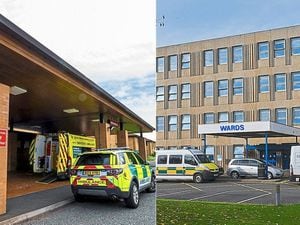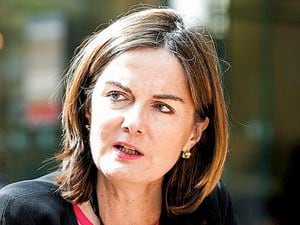Future Fit: Bosses need to be 'more positive' about Shropshire hospital plans
Future Fit bosses need to be “clearer and more positive” about the benefits of the hospital reconfiguration, board members have heard.

Shrewsbury and Telford Hospital NHS Trust (SaTH) interim strategy and planning director Chris Preston said many staff involved in the project had been diverted towards responding to the Covid-19 pandemic, but a “reset” was taking place.
He added that a 70 per cent rise in the expect cost, taking it over half a billion pounds, was “primarily for reasons out of our direct control” but presents “an affordability challenge”.
Hospital transformation programme medical director Andrew Tapp told the SaTH board the new model – which would move emergency medicine to the Royal Shrewsbury Hospital, with Telford’s Princess Royal Hospital focussing on planned care – would remove “unnecessary complexity” and help the trust retain medical staff.
See also:
Mr Preston told members that the easing off of the coronavirus pandemic “is an opportune moment to reset the timelines for the programme”.
“One of the primary ones is finalising the strategic outline case [SOC] and getting it approved by NHS England / Improvement,” he added.
A report by Mr Preston noted that, in 2018, the Department of Health and Social Care approved £312 million of funding, based on the estimated capital value in the draft case compiled two years earlier.
“In the revised 2019 draft SOC, the funding requirements had increased to £533 million, predominantly due to increases in published government inflation rates and changes to technical classifications,” he wrote.
Mr Preston told the board this would have to be addressed in the finalised case.
Dr Tapp said the current set-up “which has our two hospitals accepting both unplanned or emergency patients and planned inpatients, is unnecessarily complex and has patients being seen in inappropriate settings and some poor and ageing facilities”.
Supported
He added: “The hospitals are set up with some duplication of specialities across the two sites where they struggle to recruit to modern staffing standards and, significantly, a number of specialities are only delivered on one site, so our patients do not have immediate access to our support.”
Dr Tapp reminded the board that the Future Fit process – which has since been rebranded the “hospital transformation programme” – originally looked at 40 potential models before arriving at one.
“The model has one emergency hospital co-located with all the specialities required by our patients attending our emergency department and supported by a correctly-staffed and -sized ITU,” he said, adding it would reduce waiting times and the number of ward transfers and help recruit and retain medics, including specialists.
“Both hospitals will have urgent treatment centres (UTC), and the UTC at the PRH site will be enhanced to ensure as many patients as possible who do not need hospital admission can be seen locally.”
Non-executive director Clive Deadman said that, in the past, Future Fit had “let people focus on what they see as disadvantages and not painted a clear enough picture of the benefits for patients”.
He asked Mr Preston and Dr Tapp to “continue pressing” the positives.
“We will build centres of excellence in our areas of operation,” Prof Deadman said. “We’ll stop the leakage of services out of the county.”
Mr Preston said: “Part of what we’re trying to do in repositioning this as a whole-system initiative is to bring exactly that focus in there. So this isn’t just about the pathways specifically within the acute hospital; it’s how the acute hospital works as part of the overall pathways for patients across the system.
“I totally agree with you, Clive, we haven’t been as positive about some of the benefit and clear about some of the benefits as we need to be and we should be. That’s something we will be addressing as we go forward.”





